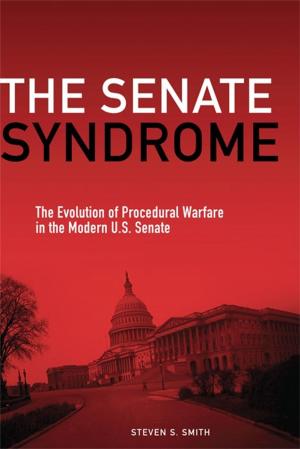Doña Teresa Confronts the Spanish Inquisition
A Seventeenth-Century New Mexican Drama
Nonfiction, History, Spain & Portugal, Americas, Mexico, United States| Author: | Frances Levine, Ph.D. | ISBN: | 9780806156613 |
| Publisher: | University of Oklahoma Press | Publication: | June 27, 2016 |
| Imprint: | University of Oklahoma Press | Language: | English |
| Author: | Frances Levine, Ph.D. |
| ISBN: | 9780806156613 |
| Publisher: | University of Oklahoma Press |
| Publication: | June 27, 2016 |
| Imprint: | University of Oklahoma Press |
| Language: | English |
In 1598, at the height of the Spanish Inquisition, New Mexico became Spain’s northernmost New World colony. The censures of the Catholic Church reached all the way to Santa Fe, where in the mid-1660s, Doña Teresa Aguilera y Roche, the wife of New Mexico governor Bernardo López de Mendizábal, came under the Inquisition’s scrutiny. She and her husband were tried in Mexico City for the crime of judaizante, the practice of Jewish rituals. Using the handwritten briefs that Doña Teresa prepared for her defense, as well as depositions by servants, ethnohistorian Frances Levine paints a remarkable portrait of daily life in seventeenth-century New Mexico. Doña Teresa Confronts the Spanish Inquisition also offers a rare glimpse into the intellectual and emotional life of an educated European woman at a particularly dangerous time in Spanish colonial history.
New Mexico’s remoteness attracted crypto-Jews and conversos, Jews who practiced their faith behind a front of Roman Catholicism. But were Doña Teresa and her husband truly conversos? Or were the charges against them simply their enemies’ means of silencing political opposition? Doña Teresa had grown up in Italy and had lived in Colombia as the daughter of the governor of Cartagena. She was far better educated than most of the men in New Mexico. But education and prestige were no protection against persecution. The fine furnishings, fabrics, and tableware that Doña Teresa installed in the Palace of the Governors in Santa Fe made her an object of suspicion and jealousy, and her ability to read and write in several languages made her the target of outlandish claims.
Doña Teresa Confronts the Spanish Inquisition uncovers issues that resonate today: conflicts between religious and secular authority; the weight of evidence versus hearsay in court. Doña Teresa’s voice—set in the context of the history of the Inquisition—is a powerful addition to the memory of that time.
In 1598, at the height of the Spanish Inquisition, New Mexico became Spain’s northernmost New World colony. The censures of the Catholic Church reached all the way to Santa Fe, where in the mid-1660s, Doña Teresa Aguilera y Roche, the wife of New Mexico governor Bernardo López de Mendizábal, came under the Inquisition’s scrutiny. She and her husband were tried in Mexico City for the crime of judaizante, the practice of Jewish rituals. Using the handwritten briefs that Doña Teresa prepared for her defense, as well as depositions by servants, ethnohistorian Frances Levine paints a remarkable portrait of daily life in seventeenth-century New Mexico. Doña Teresa Confronts the Spanish Inquisition also offers a rare glimpse into the intellectual and emotional life of an educated European woman at a particularly dangerous time in Spanish colonial history.
New Mexico’s remoteness attracted crypto-Jews and conversos, Jews who practiced their faith behind a front of Roman Catholicism. But were Doña Teresa and her husband truly conversos? Or were the charges against them simply their enemies’ means of silencing political opposition? Doña Teresa had grown up in Italy and had lived in Colombia as the daughter of the governor of Cartagena. She was far better educated than most of the men in New Mexico. But education and prestige were no protection against persecution. The fine furnishings, fabrics, and tableware that Doña Teresa installed in the Palace of the Governors in Santa Fe made her an object of suspicion and jealousy, and her ability to read and write in several languages made her the target of outlandish claims.
Doña Teresa Confronts the Spanish Inquisition uncovers issues that resonate today: conflicts between religious and secular authority; the weight of evidence versus hearsay in court. Doña Teresa’s voice—set in the context of the history of the Inquisition—is a powerful addition to the memory of that time.















